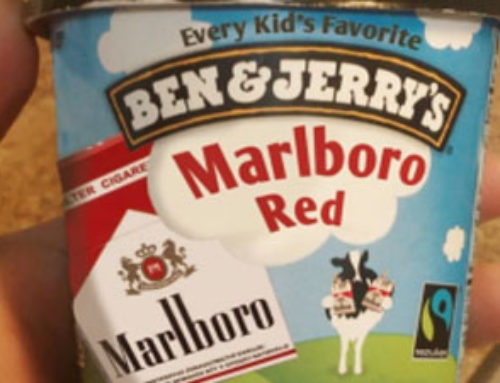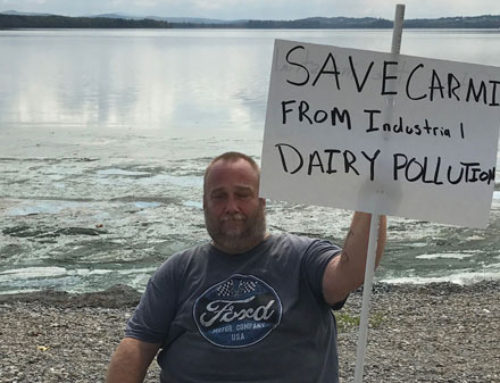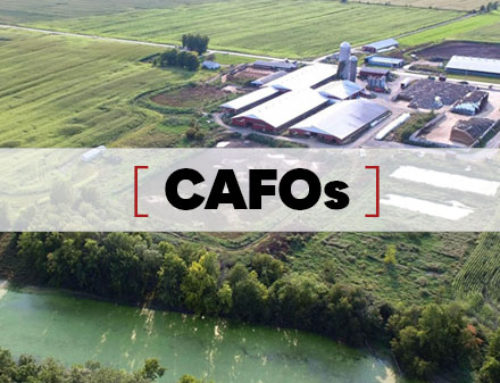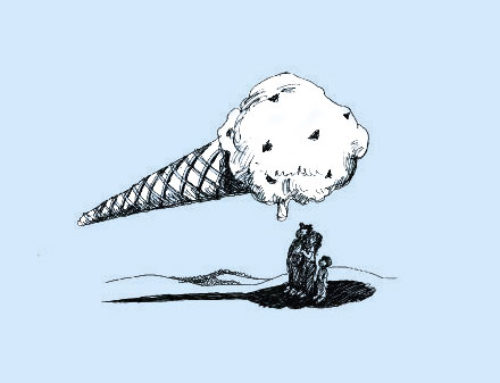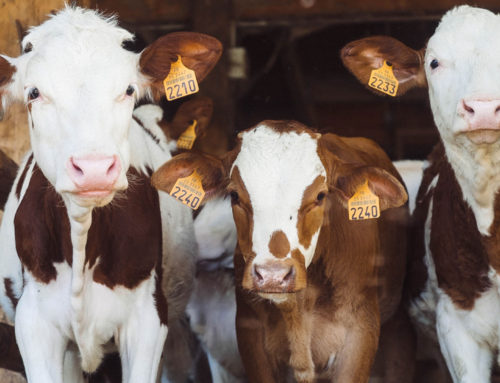By MICHAEL COLBY & WILL ALLEN
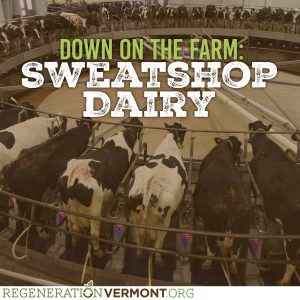 Vermont agriculture exists in what seems to be two parallel universes, one in our minds and the other in reality. When people are asked to think about or imagine Vermont farming, they’ll inevitably mention grass and pastures and grazing cows, all with a perfect blue sky and just the right puffy clouds. It’s a well-marketed image, and comes attached to flavors like Cherry Garcia and slogans like “farmer owned.”
Vermont agriculture exists in what seems to be two parallel universes, one in our minds and the other in reality. When people are asked to think about or imagine Vermont farming, they’ll inevitably mention grass and pastures and grazing cows, all with a perfect blue sky and just the right puffy clouds. It’s a well-marketed image, and comes attached to flavors like Cherry Garcia and slogans like “farmer owned.”
But the reality is much different. Because a vast majority of Vermont’s agriculture – more than 70 percent — is all about commodity-driven, nonorganic dairy production, where GMO crops dominate, cows are on concrete, gorged and fully dosed with an array of pharmaceuticals, fields are bathed in toxic pesticides, and our waterways are declared impaired as a result of the nitrogen and phosphorus-rich farm runoff.
Nope, these aren’t the quaint little family farms of yesteryear, the ones still dancing in your head when you imagine Vermont agriculture. It’s not that these farms don’t exist, it’s that they’re getting pinched out by the dominant industrial model, a model that is coddled by Vermont’s political and regulatory elite and subservient to Vermont’s two giant nonorganic-dairy corporations: Ben & Jerry’s and Cabot Creamery.
The success of these two dairy giants was built on two things: the backs of Vermont’s dairy farmers and some effective marketing based on an image of Vermont farming being rather pure and bucolic. The Yankee pride dictated the farmers’ wry smiles, even though they’ve been in a near-constant state of economic brinksmanship for generations, seeing so many of their family members and neighbors go under. But the myth declared that all was well in New England farm country, and so we all joined in.
It’s all folded nicely within the branding, the stories and images of the Ben & Jerry’s cows and the lush, rolling fields for Cabot’s bovines. And it’s always wrapped with a ribbon of support for the farmer, because everyone supports the farmer, right? Except, that is, when it comes time to providing them with a fair price.
The harsh reality is that Vermont’s dairy farmers are mired in yet another period of economic peril. It’s been said so often — “these are tough times for dairy farmers” – that it barely registers anymore. Besides, there are fewer and fewer dairy farmers to care about in Vermont. In 50 years, Vermont lost more than 11,000 dairy farms, with only 800 or so remaining today. We’ve been loving them to death.
There’s been nothing subtle about the economic decline in commodity dairying since the chemically intensive, confinement methods began to take hold in the 1950s. Farm families were culled from the ranks as consolidation and growth became the norm. You had to, as the saying went, either get big or get out. It’s been pure economic Darwinism, pitting farmer against farmer in a fight for survival and a rush to produce more and more milk to make up for the low commodity pricing.
If Vermont farmed like we think it farms, we wouldn’t be facing the economic and ecological catastrophes caused by the way we’re actually farming: industrially, commodity driven (read: lowest price, lowest quality), chemically intensive, and economically crippling.
With that as its history, it’s hard to imagine that things are getting even worse for today’s dairy farmers. But consider this: The average-sized dairy farm in Vermont today (around 125 cows) that sells its milk to the conventional, commodity market is losing more than $100,000 a year. And this is the market that Ben & Jerry’s and Cabot Creamery have chosen to force their farmers through, knowing that the farmers who provide them with their essential ingredients – milk! – are getting paid less than it costs them to produce it.
Currently, Vermont’s nonorganic dairy farmers are getting about $14 a hundredweight, which translates to 11.6 gallons of milk. According to U.S. Department of Agriculture (USDA) data on cost of production, it now costs a Vermont dairy farmer more than $22 to produce that same milk. So, at current pricing levels, it’s costing a farmer around $8 to sell each 11.6 gallons of milk they produce. Thus, they are literally paying to sell their milk.
Down on the farm, it’s economic exploitation. If sweatshop laws were in play for Vermont’s dairy economy, the kingpins and benefactors of the exploitation, Ben & Jerry’s and Cabot Creamery, would be summarily convicted. They are choosing to economically strangle their suppliers, the farmers, by paying only the lowest of commodity prices. And, worse, they are refusing to take the lead in transitioning their farmers – representing 80 percent of Vermont’s dairy farms – toward the obvious organic, regenerative solution.
Up in the corporate boardrooms, however, it’s economic glee. Cabot Creamery’s corporate owner, Agri-Mark, has been reporting revenues touching the billion-dollar mark for the last several years, representing a steady growth in profit. “Our Cabot brand continued to grow in sales and profits,” reports a recent Agri-Mark press release, promising “to continue our record of innovative marketing and profitability.”
Likewise, Ben & Jerry’s is experiencing record growth, nearing the $600 million a year in revenues level, according to the most recent annual report published by Unilever, Ben & Jerry’s corporate owner. It cites Ben & Jerry’s and its other “purpose-driven brands” for “delivering stronger and faster growth,” which “accounted for half of Unilever’s growth in 2014.” And this from a corporation that owns dozens of brands, 14 of which – Dove, Hellmann’s and Lipton, for example – have sales of more than a billion dollars each. Yes, each. And Ben & Jerry’s, according to its parent corporation, is outperforming them.
So it’s not all bad in the land of milk, cheese and ice cream. Unless, that is, you’re down on the farm.
Sadly, there’s nothing new about the story of corporate exploitation of the rural worker. The treatment of the modern dairy farmer is just its latest chapter, from a book that includes the great roundup of rural workers for the migration to the urban sweatshops and factories, where they toiled in harsh conditions for little pay while great wealth was amassed by the owners and corporate overseers. At least, as today’s dairy farmer could opine, the sweatshop workers were paid for their work.
It doesn’t have to be this way. And with the images of healthy cows on green pastures still dancing in our heads, we know exactly how it should be. If Vermont farmed like we think it farms, we wouldn’t be facing the economic and ecological catastrophes caused by the way we’re actually farming: industrially, commodity driven (read: lowest price, lowest quality), chemically intensive, and economically crippling.
We can fix this. More than 200 Vermont dairy farmers have already made the fix, by transitioning to organic production, often times reducing their herds, returning the cows to grazing and a grass-based diet, sequestering carbon with cover crops and grasses, and making a decent income. While this is the darkest hour for industrial dairying, with prices below the cost of production and the ecological spotlight becoming increasingly focused on its damaging methods, the promise of the solution — organic, regenerative agriculture – has never been brighter.
Since late last year, Regeneration Vermont has been engaging with Vermont’s dairy stakeholders — dairy farmers, grazing experts, financial planners, dairy buyers and processors, leaders of our iconic brands, and regulators and politicians. The former secretary of agriculture, Roger Allbee, recently summarized the sobering sentiment amongst the reasonable: Dairying as we know it is over.
Right now, we’re deep in discussions with Ben & Jerry’s about creating a path toward a fundamental change in the way they source their dairy. Sweatshop dairying doesn’t quite fit the image they’ve been banking on, and, to their credit, they’re seeking to do something about it. Regeneration Vermont is pushing them to go fully authentic, embarking on a path to a complete transition to organic/regenerative farming. We understand that it will take time, and that’s why we want to start now, and begin to signal to Vermont’s struggling dairy farmers that there’s a viable option.
Imagine if Vermont started to farm the way people think we farm. It would free us from the failing industrial models that have put us into the ditch of sweatshop dairies, cows on concrete, and water too polluted to swim in. To the contrary, a regenerative/organic future could make Vermont’s farming image a reality, one that would provide a high-quality product, a fair price to farmers and farmworkers, better conditions for cows, and a way to address climate change through better soil management. And we’d be doing what Vermont does best: leading, not following.
